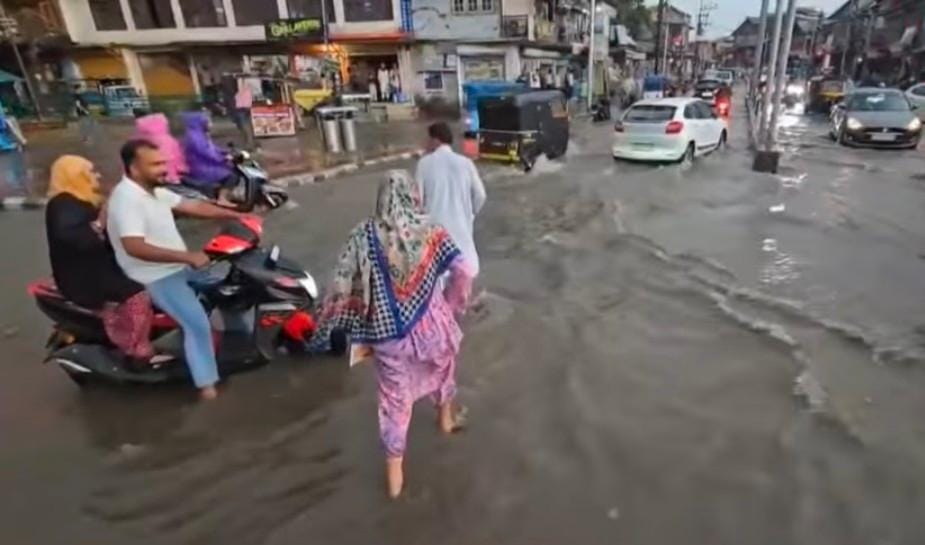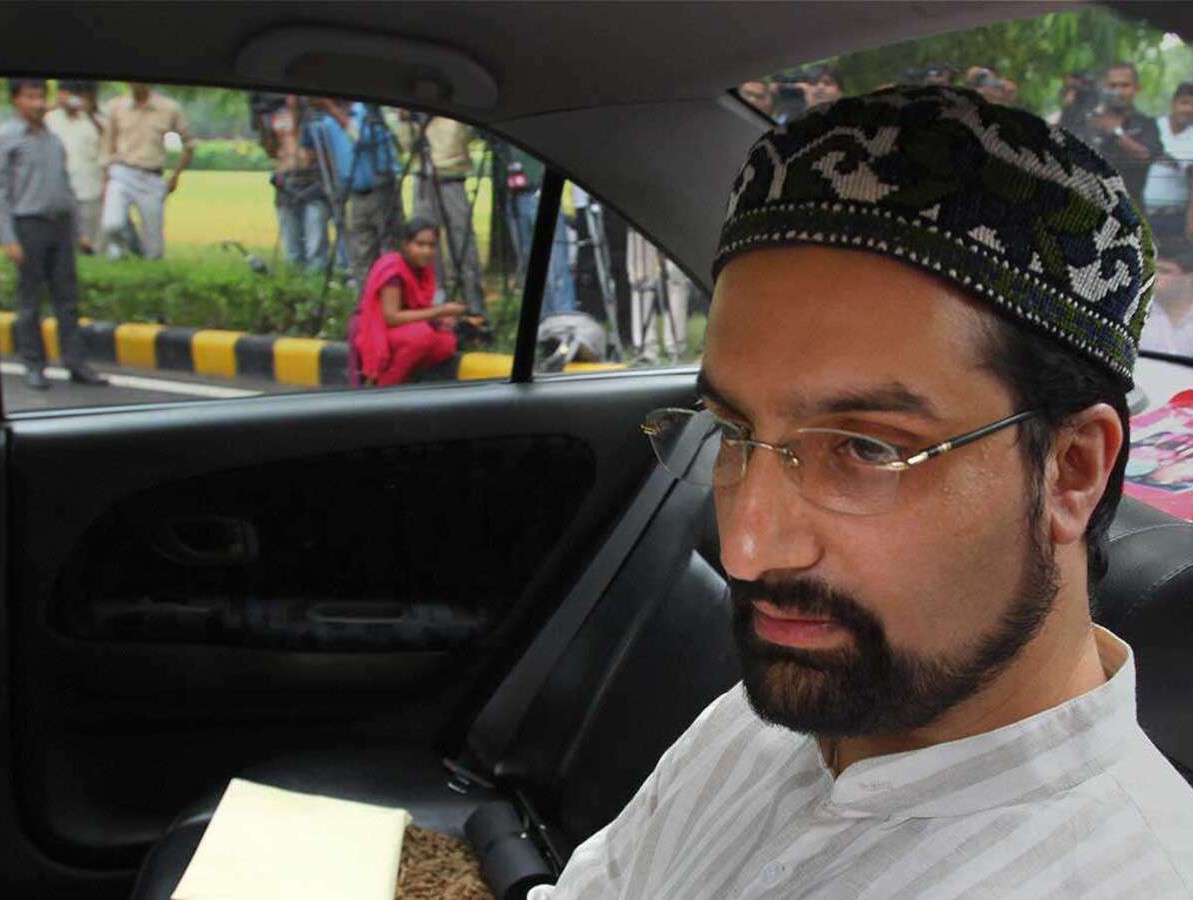Why a ₹3,634-Crore Makeover Still Leaves the City Flooded
By: Javid Amin | 30 Aug 2025
The Vision That Sparked Hope
When the Srinagar Smart City Mission was announced, it promised more than infrastructure—it promised transformation. The idea was to turn Srinagar into a resilient, eco-friendly, culturally vibrant city that could balance modernization with heritage and stand strong against natural disasters.
The funding breakdown itself was ambitious:
-
Area-Based Development (₹2,869.24 crore) – revamping specific parts of the city like Lal Chowk, the Jhelum riverfront, and Shahr-e-Khaas (Old City).
-
Pan-City Solutions (₹765.03 crore) – digital infrastructure, smart governance, and traffic management across Srinagar.
What citizens expected:
-
Modern drainage systems to prevent floods and waterlogging.
-
Smart mobility solutions—traffic decongestion, AI-based traffic control.
-
Heritage conservation in iconic zones like Lal Chowk, Shahr-e-Khaas, and Jhelum’s ghats.
-
Digital infrastructure to ensure transparency, better services, and citizen safety.
For a city scarred by the 2014 floods—when Srinagar remained submerged for weeks—the mission raised hopes that future generations would never again witness such devastation.
What Has Been Delivered (As of August 2025)
Officially, the numbers look impressive: 143 out of 161 projects completed.
-
Riverfront Phase I: Promenades, pedestrian zones, aesthetic lighting, ghats.
-
Lal Chowk Redevelopment: Pedestrian plazas, underground cabling, uniform signage.
-
Integrated Traffic Management System (ITMS): AI-powered surveillance cameras, automated traffic lights.
-
Srinagar Data Network (SD Net): The city’s digital governance backbone.
-
Shahr-e-Khaas Heritage Revival: 85% completion, facades improved in old markets.
-
Underground ducting along Jhelum’s right bank: 75% complete.
On paper, Srinagar seems reborn: digitized, redeveloped, heritage-conscious.
But step into the streets during rain, and a very different Srinagar emerges.
The Missing Links: Where Smart Meets Stagnant
Despite crores spent, Srinagar remains submerged after heavy rain.
1. Flooded Roads, Choked Drains
-
Bemina, Lal Chowk, Jawahar Nagar, Rajbagh—all key areas still flood after a two-hour downpour.
-
Modern pavements conceal drains too narrow to handle rainfall.
-
Sewerage and stormwater lines remain outdated, unintegrated.
2. Encroached Floodplains, Vanishing Wetlands
-
Srinagar, once called the “City of Lakes”, has lost its natural flood buffers.
-
Narkara, Khushalsar, Hokersar wetlands—shrinking rapidly due to illegal construction.
-
Flood spill channels narrowed by unregulated growth, making flooding inevitable.
3. No Dredging of Jhelum Since 2020
-
Despite repeated assurances, zero kilometers dredged in 5 years.
-
Riverbed siltation reduces Jhelum’s carrying capacity.
-
The danger: even moderate rainfall risks flash flooding.
4. Half-Ready Tech Solutions
-
Smart water-level sensors still in pilot mode.
-
Flood alerts remain reactive, not predictive.
-
ITMS helps traffic—but when waterlogging caves in roads, its gains disappear.
5. Beautification Over Basics
-
Crores spent on tiles, signage, lights.
-
But underground lifelines—drains, sewerage, water pipelines—neglected.
-
A Rajbagh resident summed it up:
“What good is a smart square if my living room floods every September?”
Ground Reality vs Smart Narratives
The contradictions of Srinagar’s Smart City story are stark.
-
Lal Chowk: Instagram-ready plazas, kiosks, fountains. Yet drains overflow in hours of rain.
-
Jhelum Riverfront: Lit promenades, benches, walkways. Yet the river itself is silted and encroached.
-
ITMS cameras: Issue fines for wrong parking. Yet ambulances remain stuck in flooded roads.
The outcome? Aesthetic delivery has overtaken resilience delivery.
Voices from the Ground — When Promises Don’t Drain the Streets
Residents Speak
-
Shabir Ahmad (Shopkeeper, Lal Chowk):
“My shop looks modern from outside, thanks to uniform facades. But every time it rains, the drain in front overflows and floods my basement. Smart City hasn’t made my life easier.” -
Sana Bhat (Student, Jawahar Nagar):
“During my Class 12 board exams, I had to wade through knee-deep water. ITMS may regulate traffic, but it can’t stop students from missing exams due to waterlogging.” -
Arif Wani (Resident, Bemina):
“Every September, I shift my furniture to higher floors. We were told Smart City would fix drainage. Instead, we only got new tiles.”
Experts Warn
-
Urban Planner: “Wetlands are Srinagar’s sponges. Losing them means losing natural flood control.”
-
Hydrologist: “No dredging in 5 years is a recipe for disaster. Jhelum cannot carry excess rainfall.”
-
Heritage Expert: “Heritage revival is welcome, but without climate resilience, Lal Chowk will remain decorative, not livable.”
Experts, Data & The Way Forward — Can Srinagar Still Be Saved?
Srinagar is not alone. Other Indian cities—Kochi, Pune, Chennai—have also struggled with urban flooding. But some lessons stand out:
-
Kochi: Integrated drainage masterplan, wetland protection.
-
Pune: Smart flood forecasting linked to city sensors.
-
Chennai: Court-enforced crackdown on encroachments post-2015 floods.
Policy Prescriptions for Srinagar
-
Invest in drains before tiles. Surface beautification must never replace core infrastructure.
-
Enforce anti-encroachment laws. Wetlands and floodplains must be treated as protected assets, not real estate.
-
Restore wetlands. Reviving Narkara, Khushalsar, Hokersar can bring back natural flood buffers.
-
Make flood forecasting predictive, not reactive. AI-linked water sensors must shift from pilot to full-scale implementation.
-
Dredge the Jhelum urgently. Without restoring its capacity, every rupee spent on riverfront beautification risks going waste.
Bottom-Line: Srinagar’s Smart City Crossroads
The Srinagar Smart City Mission was launched to marry heritage with modernity, and resilience with beauty.
Instead, it risks becoming a showpiece project: facades, tiles, lights, and cameras—while ignoring survival infrastructure.
The city now stands at a crossroads:
-
Will the next ₹100 crore go into plazas or drains?
-
Will wetlands be restored or sold off?
-
Will flood warnings stay after-the-fact alerts, or become life-saving predictions?
Until those questions are answered, Srinagar remains a city where, as locals wryly say: “The drains don’t know it’s 2025.”



